Vermona DRM1 Review
Long-Term Test
Lee esta reseña en español
The Vermona DRM1 mkIV is the fourth version of the German company’s analog drum synthesizer and we put it through a long-term test with five reviewers – their impressions in quotes below. Now you may dismiss this drum synth since it only contains eight percussion sounds and comes with a significant price tag, but you’d be doing yourself a disservice. Not only does Vermona’s take on the venerable drum synthesizer come with a comprehensive feature set, and a very cool super power, but “it’s the best drum synth on the planet,” according to one of our reviews who is an avid collector. Need more convincing? The Vermona DRM1 mkIV is a FutureMusic Power Award winner.

Please note that as we were conducting our long-term test of the mkIII, Vermona announced the mkIV. The new model adds USB, MIDI Output, a universal power supply and subtle tweaks to the circuitry, including modifying the control curves, frequency ranges, levels and redesigning sub-circuits. The optional trigger inputs have been upgraded to allow different voltage levels for triggering the instrument channels with more dynamics. We got our hands on the new mkIV to test the new enhancements and found the overall sound to be “cleaner” – “more present” and “punchier.” In fact, spending time with both units ended up being a blessing in disguise since we were able to compare the units for this review.
Please understand, unlike many new drum machines and synths that have come to market in the last few years, the DRM1 is not a clone of the Roland 808, 909 or other renowned vintage synths and it does not contain a sequencer. It is strictly an analog drum synthesizer. What truly sets it apart from other drum synths are the multitude of sound sculpting modifiers for each sound. Each of its sounds have seven modifiers, plus pan and volume. The sounds include: Kick, Drum One, Drum Two, Multi, Snare, Hi-Hat One, Hi-Hat Two and Clap.


The easiest way for electronic musicians to get their music onto Spotify, Apple Music, iTunes, Amazon Music, Tidal, Instagram, Facebook, TikTok, Pandora, Twitch & much more! Click the banner above or the Go Button to save 7% off of your signup! GO!
The Vermona DRM1 has its own distinctive sound, which has evolved since the synth debuted fifteen years ago. Our reviewers “loved the sound signature” since it worked “both on its own, and layered with other drum machines, samples and loops.” The mkIII’s Kick has a “nice thump” with “more rounded edges,” while the mkIV, is definitely “more pronounced” with “additional bite.” Both the mkIII and the mkIV “can stand on their own” or “sound insane when layered with a short kick sample with a ‘nice foot’ to give you the best of both worlds.” The Kick’s shapers include: Decay, Pitch, Bend, Time, Wave, Noise and Attack. With so many ways to alter the sound, “it can take some time to dial in the sound you’re looking for…but that’s half the fun.” Not only are there seven modifiers, but each one can affect the other attributes. Our reviewers found that the best way to recall a particular sound, was to make detailed notes, or “to take a picture of the unit when you find a sound you like,” since the DRM1 doesn’t have the ability to store sounds.
The Drum One and Drum Two are essentially your Toms, but can emulate other percussion sounds as well. Modifiers include Decay, Pitch Bend Attack, FM Int, FM Freq, and FM Wave. Here, you can go from “subtle deep tones” to “pounding tribal workouts” just by modifying a few knobs. One of our reviewers was able to create a “simple techno baseline with its own distinctive flavor and drive.”
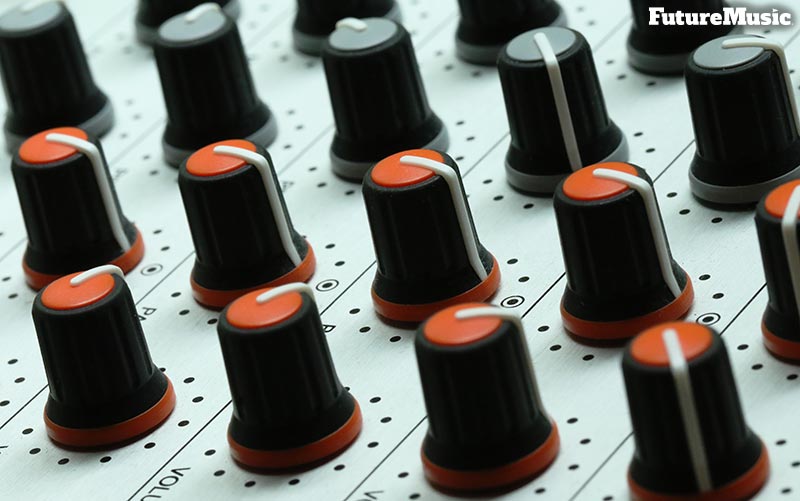
Next up is Multi, which is like the Drum One and Two in some ways, but has a “more metallic structure” for achieving bell sounds and other sounds in that vein. Its modifiers include: Decay, Pitch, Bend, Attack, Pitch 2, Pitch 3, and High Pass.
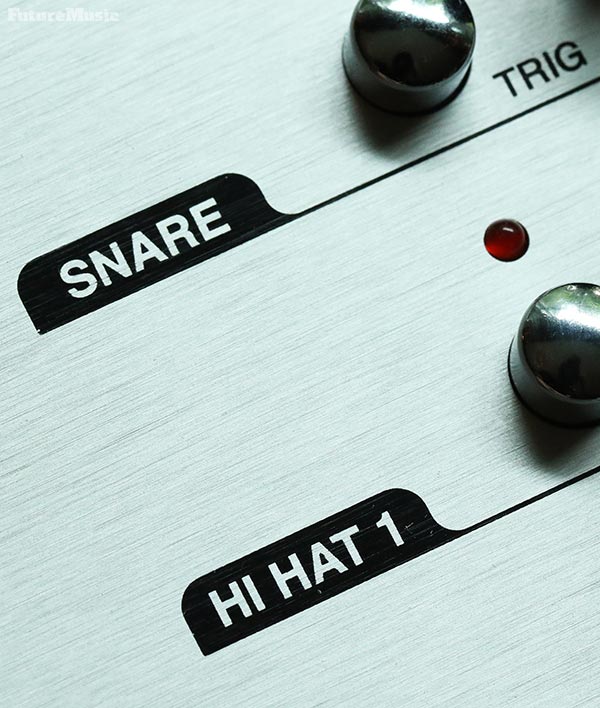
Please Snare With Us
The Snare “really pops” especially since the enhanced Noise attribute adds what many would call serious ‘snap’ to the sound. It can be somewhat “abrasive, if you’re not careful” – so use caution here. The Snare (and Clap) both feature an element called Reverb, which is more of a pink noise element to soften the snare’s character. This sound really allows you to craft a snare sound to your liking, although a longer Decay time may be a consideration for the mkIV, The Snare’s modifiers include: Decay R, Reverb, Decay N, Noise, Attack, Reso, and Filter. The Resonance and Filter tune the low frequency elements of the Snare and turning down the noise generators will allow you to get a nice High Tom sound, if you desire.
The mkIV’s High Hats are not as “sloppy sounding” as the mkIII, which most likely can be attributed to the new circuitry. Modifiers include: Decay, Filter, Bend, Attack, Reso, Mix and Pitch. There are two sound sources, High Hat 1 and High Hat 2, to achieve Open and Closed sounds, as well as anything in between. They work great together, especially when you add Swing via your sequencer. Adding High Hat samples, “can really get things moving” and provide “interesting textures” that cannot be accomplished independently. You can also realize metallic, bell-like sounds from the High Hats, including Jews Harp, Flextone and more.
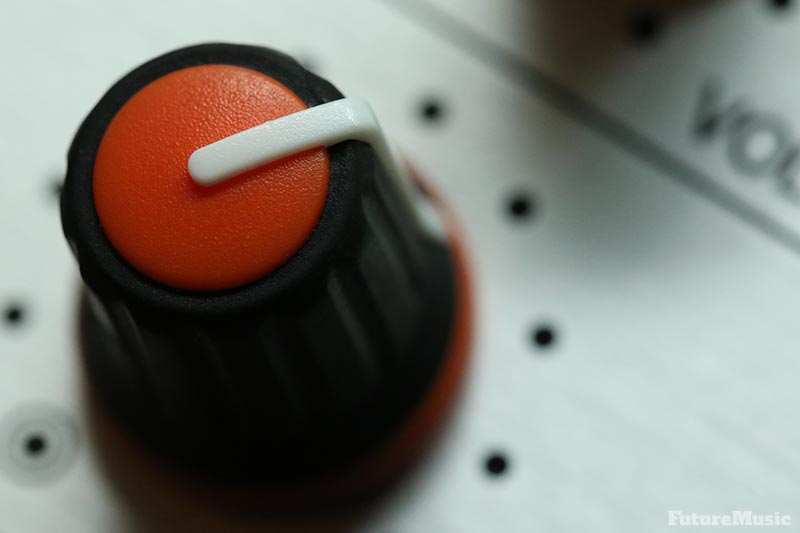
Mind The Clap
Finally, we come to the DRM1 mkIII’s Clap. It’s the “DRM1’s least inspiring sound, “but gets the job done if you don’t have another sound source.” Even though one reviewer felt the “voice could have been better served on another percussive element,” like a rim shot, or a “more electronic, Simmons-y Zap sound.” You can dial it to a degree to create “alien bloop scapes” and other non-clap sounds with the Delay, Reverb, Clap, Noise, Reso, Filter and Highpass. That said, our reviewers all found that as a pure Clap, it can “just sound like a few firecrackers going off” instead of an “uplifting factor to get the energy up in a track.”
Vermona obviously realized that the Clap was the DRM1’s weakest sound and revamped it in the mkIV to some degree. The modulators include Decay Rev, Reverb, Clap, Noise Color, Noise, Resonance and Filter. Like the Highpass feature in the mkIII, the Noise Color “doesn’t do as much as you’d like” to change the sound. The mkIV’s Clap “has more presence,” but “no real randomization” or anything else to “make it more natural or Clap-like.” In addition, it just seems Vermona “packed more transients into the Clap” in the mkIV, instead of “trying to impart a more human feel.”
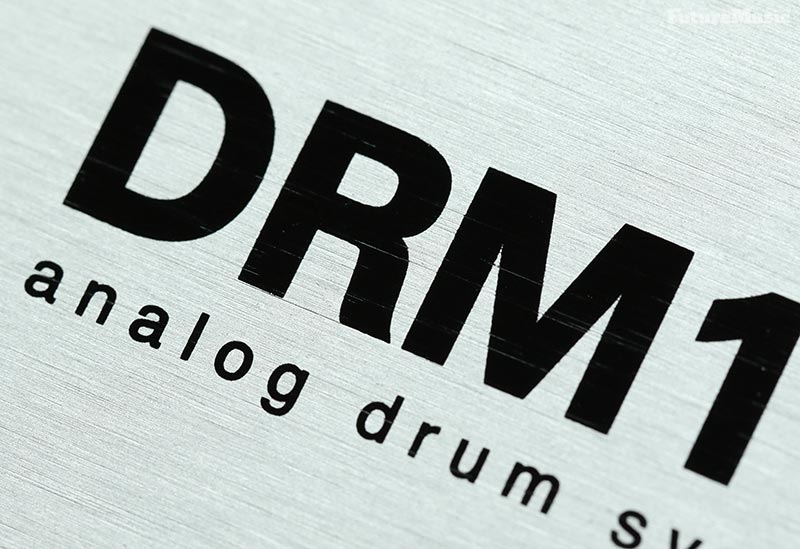
DRM1’s SuperPower
Each of the sounds mentioned above has a dedicated 1/4″ output, or is summed with a Master stereo output, also 1/4″. However, where “things get quite spicy,” is that each of the individual outputs can be used with Male TRS to Dual Male TS cables to route to an external effects unit. It’s your choice to utilize a guitar pedal or an effects unit. But since the routing is mono, our reviewers used a Death By Audio Rooms pedal, an Eventide Blackhole and some other boutique guitar effects with great results. However, one of our reviewers employed a TC Electronic Fireworx, which he felt “sharpened up the snare to a fine point.”
Vermona DRM1 mk4 Features:
» Eight analog percussion instruments on separate channels
» 73 knobs for real-time access to all parameters
» Individual outputs
» Each instrument channel output can be used as an insert
» Master Stereo Output
» Headphone output
» MIDI In / Out / Thru via DIN or USB port
» Optional analog trigger inputs that recognizes dynamic levels and converts gate to MIDI messages
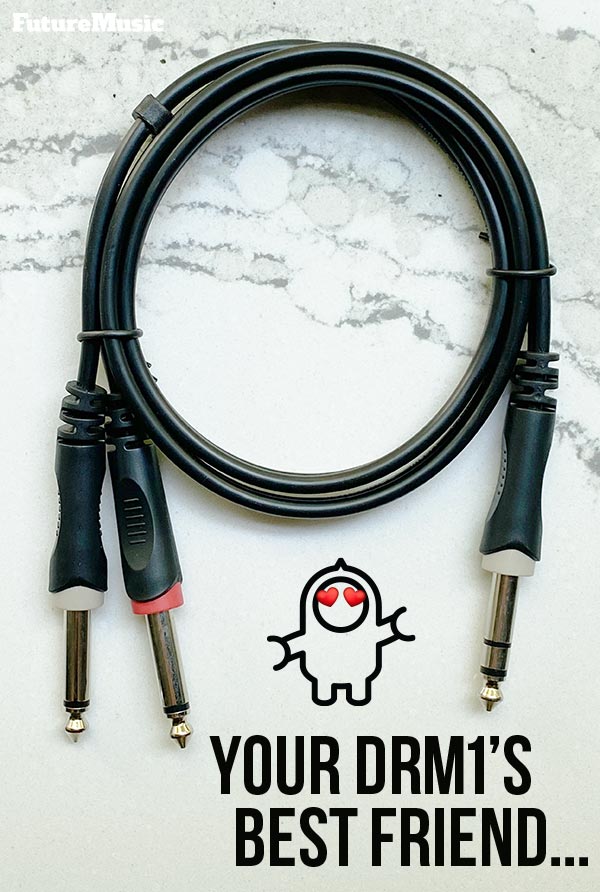
Master Outputs:
- Implementation: Two 6.3 mm Jacks; Mono, Unbalanced
- Max. Output Level: +18 dBu
MIDI:
- MIDI Channel and Note number can be assigned
- Three DIN Socket Connections (IN/OUT/THRU) | USB PORT (IN/OUT)
- Receives Note-On-Messages for triggering Instrument Channels
Trigger Inputs:
- 10 x 6.3 mm Jacks; Mono, Unbalanced
- Input Voltage Range: 2 V — 11 V
- Min. Gate Duration: 10 ms
- Modes of Operation: Gate, Gate+Accent, Gate+Dynamic, Dynamic
Dimensions & Weight:
- Dimensions Desktop (L x D x H): 483 mm x 225 mm x 125 mm (19″ x 8.9″ x 5″)
- Dimensions Rack Unit: 19″ / 5U — Mounting Depth from rear of front panel: 90 mm (3.5″)
- Weight: 3.7 kg / 7.2 lbs.
Setting the MIDI channel in the DRM1 is “kind of annoying” and “hit or miss with Vermona’s methodology.” Worse, figuring out which sound is assigned to which note using DAWless sequencers was “somewhat infuriating” when going with the default settings. Adding a dedicated channel selector on the back, or using the Trigger buttons in a more creative manner could potentially alleviate these irritations.
Conclusion
One of our reviewers, who has a pretty impressive collection of vintage and modern analog drum synthesizers feels the Vermona “DRM1 is the best analog drum synth on the planet that you can easily buy right now. Other offerings, such as Soma’s Pulsar-23, have been getting a lot of attention, and for good reason, but if you’re looking for an accessible drum synth that can do traditional sounds, as well as experimental, nothing else compares.” The DRM1 caused another reviewer to return his AVP Ritmobox drum synth that he recently acquired. “After spending only a week with the Vermona, I have to admit I’m sending my AVP Synthesizers Ritmobox packing,” he confessed. “I went with the Ritmobox because of the sequencer, but sonically, it can’t compete with the results I’m able to get with the DRM1. In fact, it’s not even close.” The Vermona DRM1 mkIV is one of the best overall products we reviewed this year. If you’re in the market for a great sounding and versatile analog drum synth, your answer is Vermona’s DRM1. Highly Recommended.
Rating: 96%
Cheers:
+ Phenomenal Tone
+ Enhanced Trigger Inputs
+ Individual Outputs
+ Ability To Insert Effects
+ Build Quality
+ Racked Or Desktop
+ Pairs Exceptionally Well With Samples
Jeers:
– No memory
– MIDI Implementation
– Clap Could Be Better

Vermona’s DRM1 mkIV costs $720 / €699 with Trigger Inputs $830 / €799.
The Future: As mentioned, the MIDI implementation for setting the channel and notes could be more sophisticated. We’d also like to see Vermona rethink the Clap sound. Granted, it’s not unusable, but with the outstanding sound quality of the other percussive elements, it comes up short. If there was a manner to deliver a new Clap with the ability to make it sound like a Rim Shot, and maybe even a Snap with new sound sculpting modifiers, that could take it from good to great.







